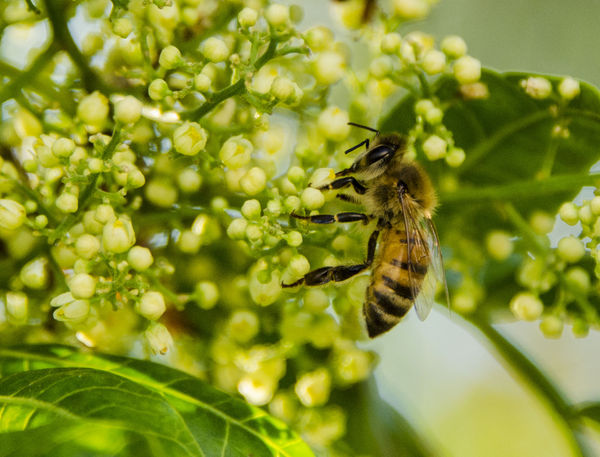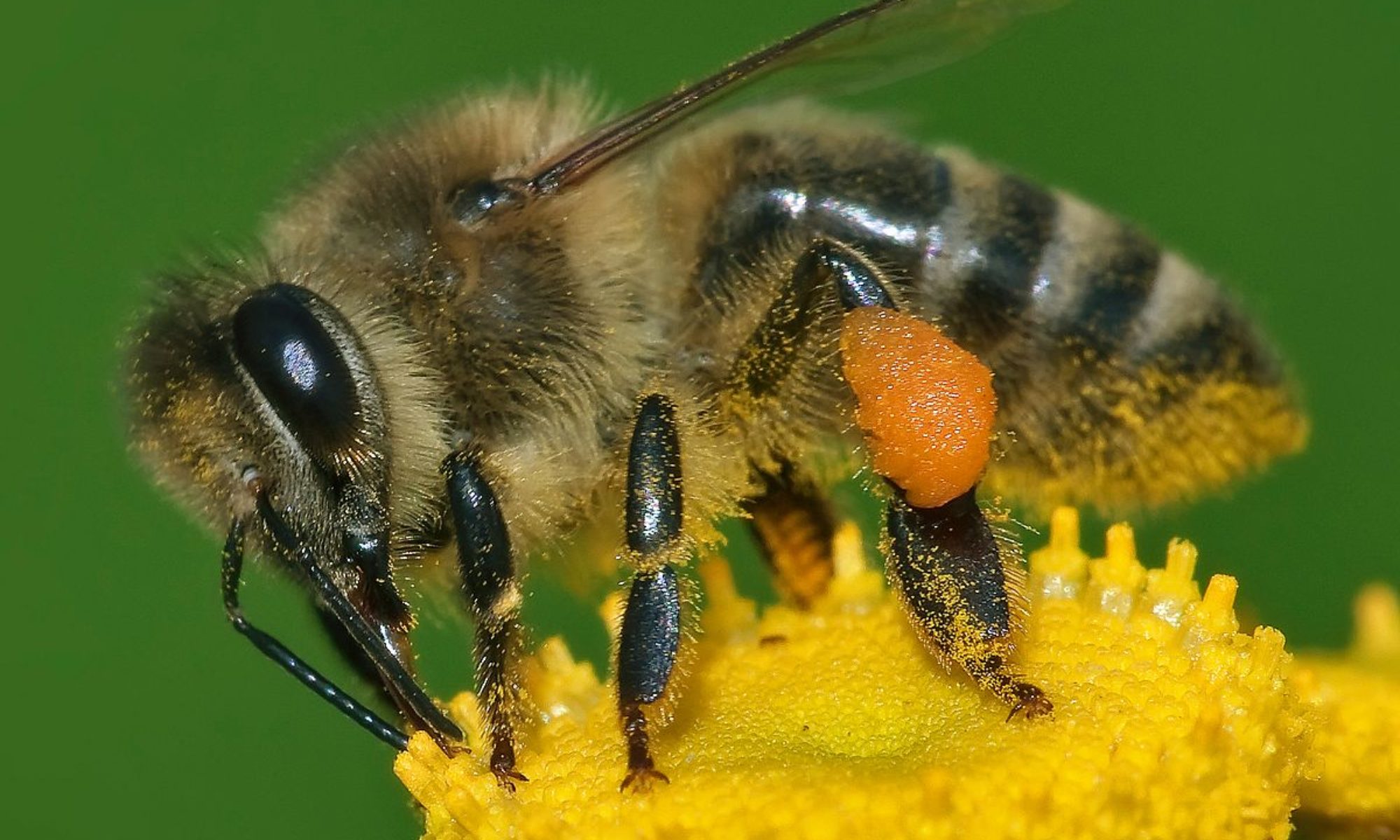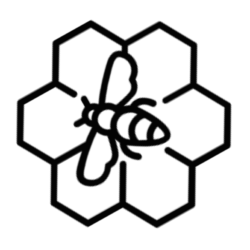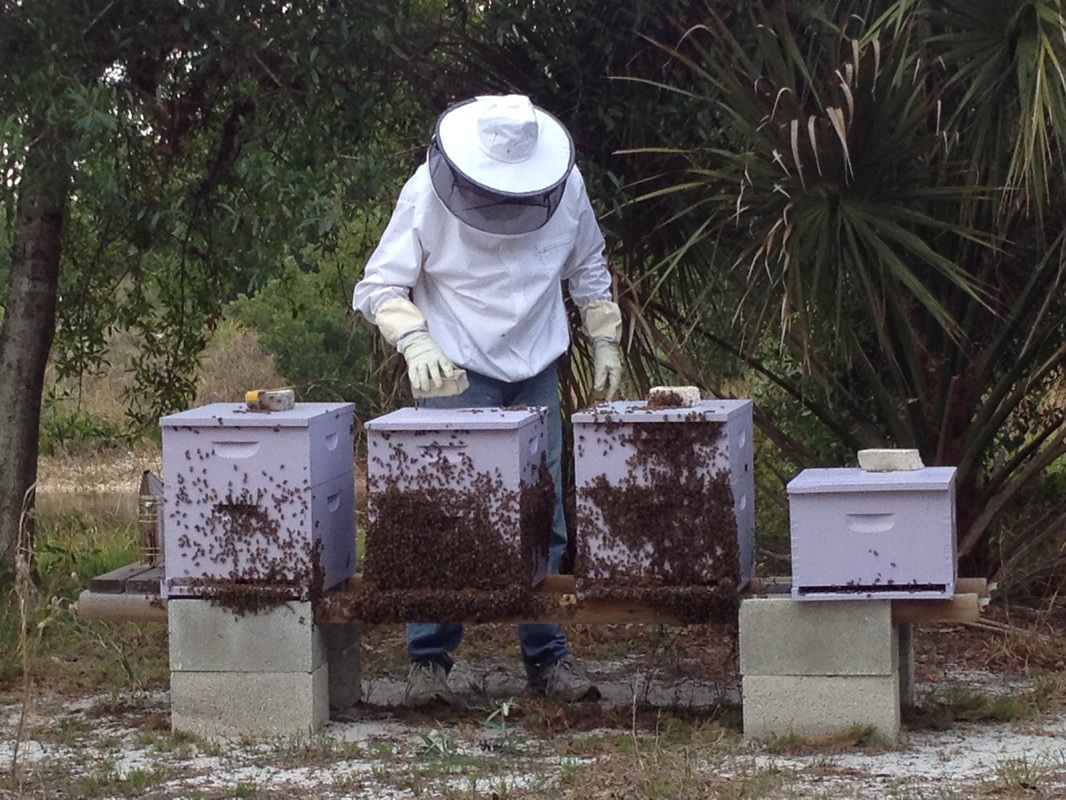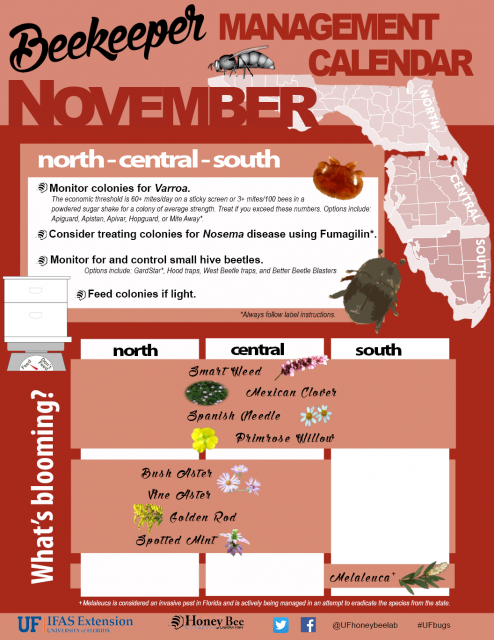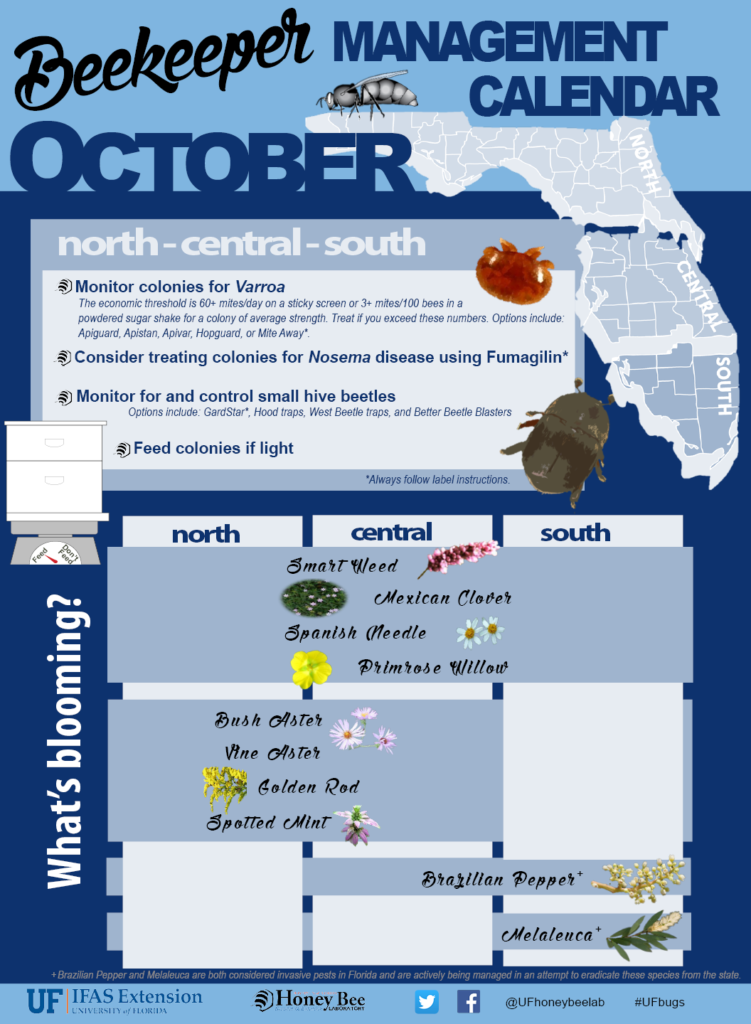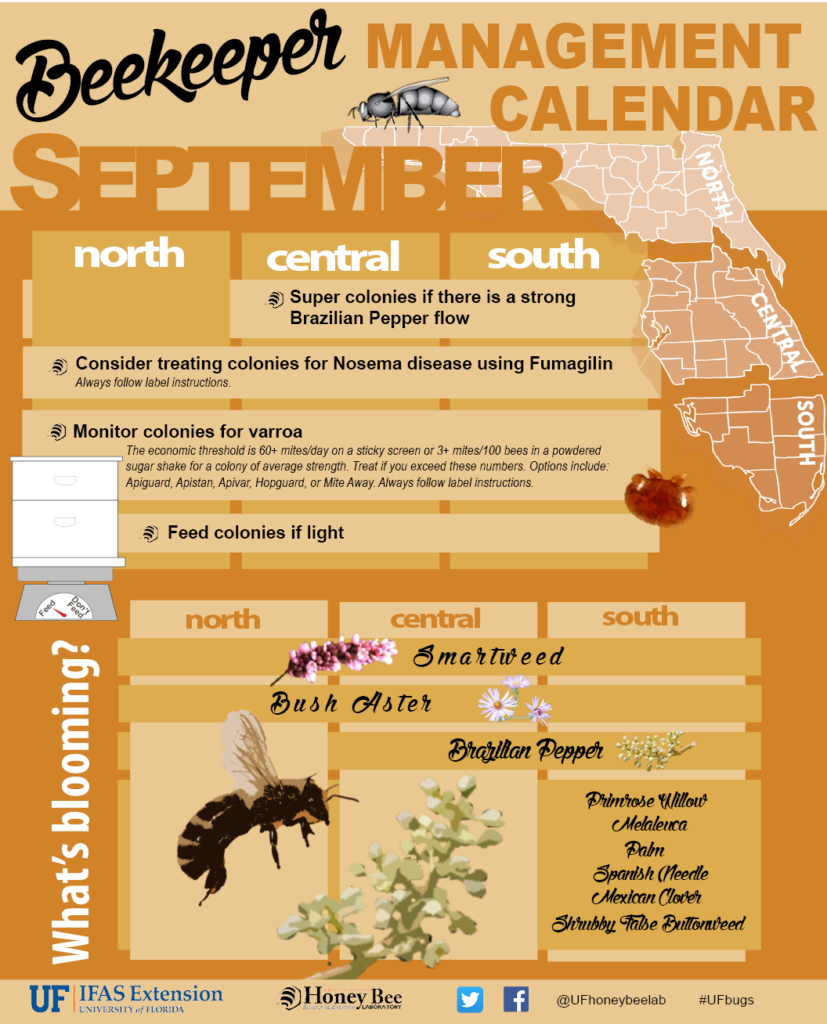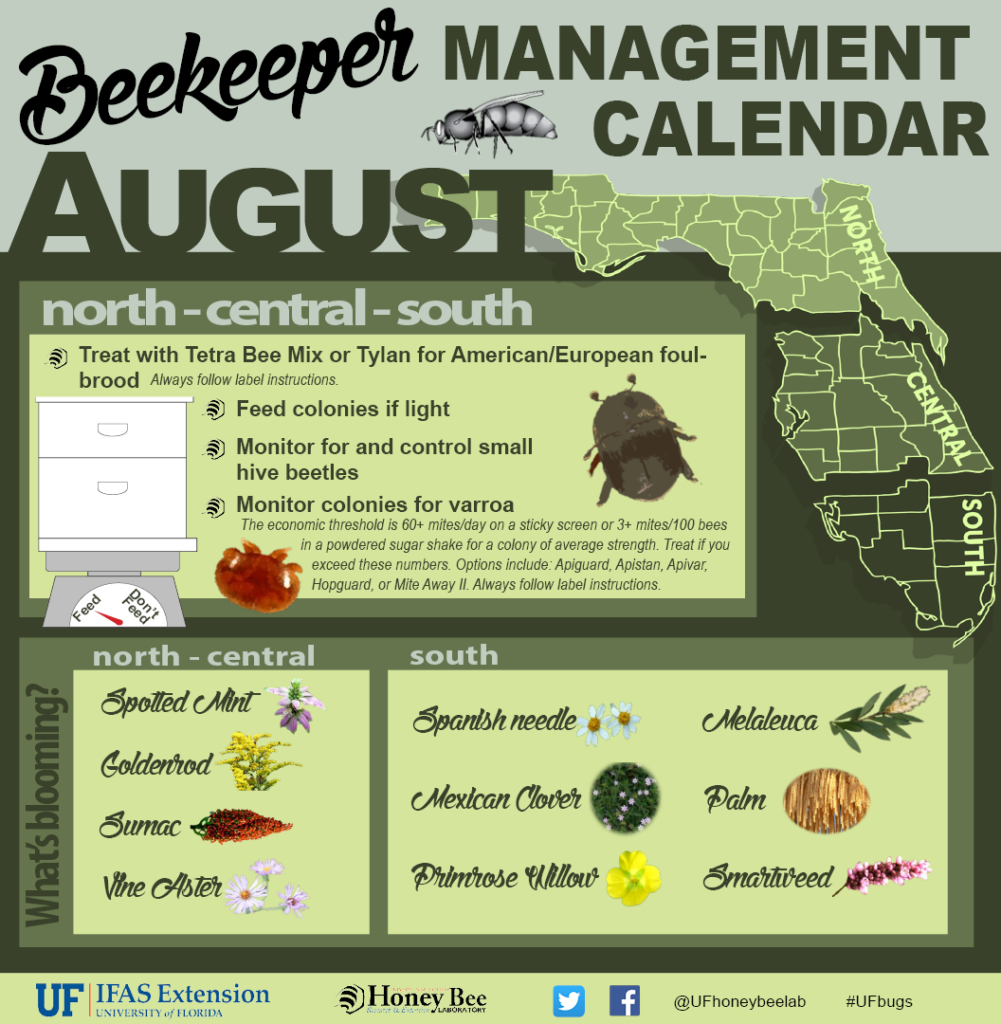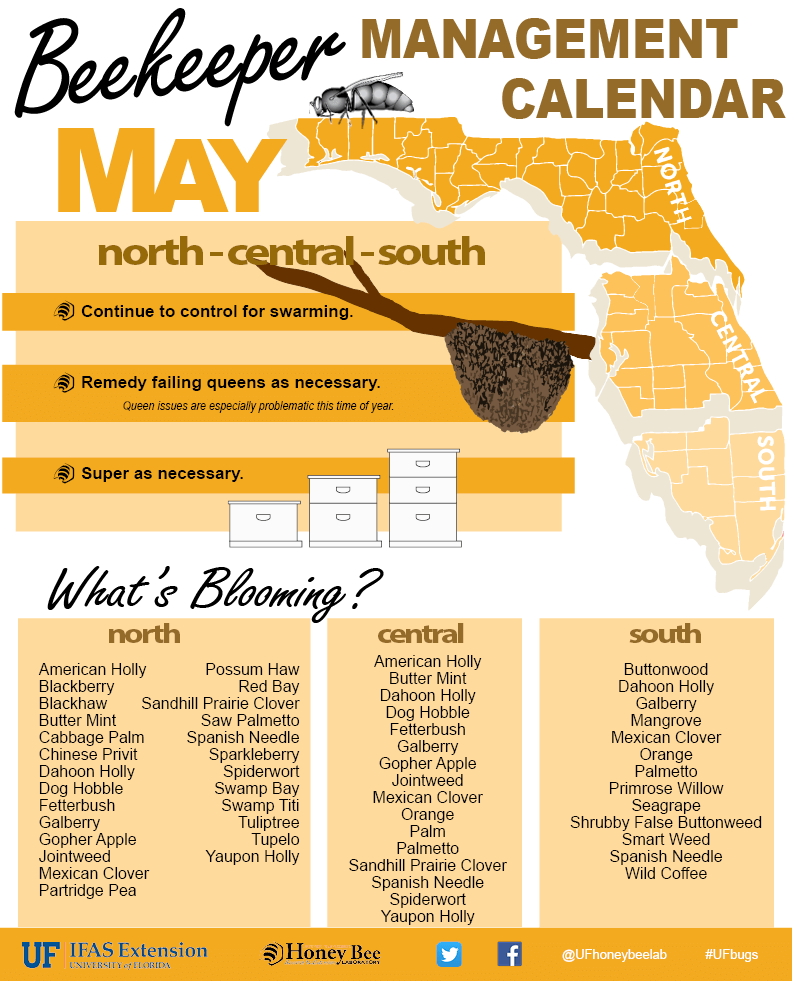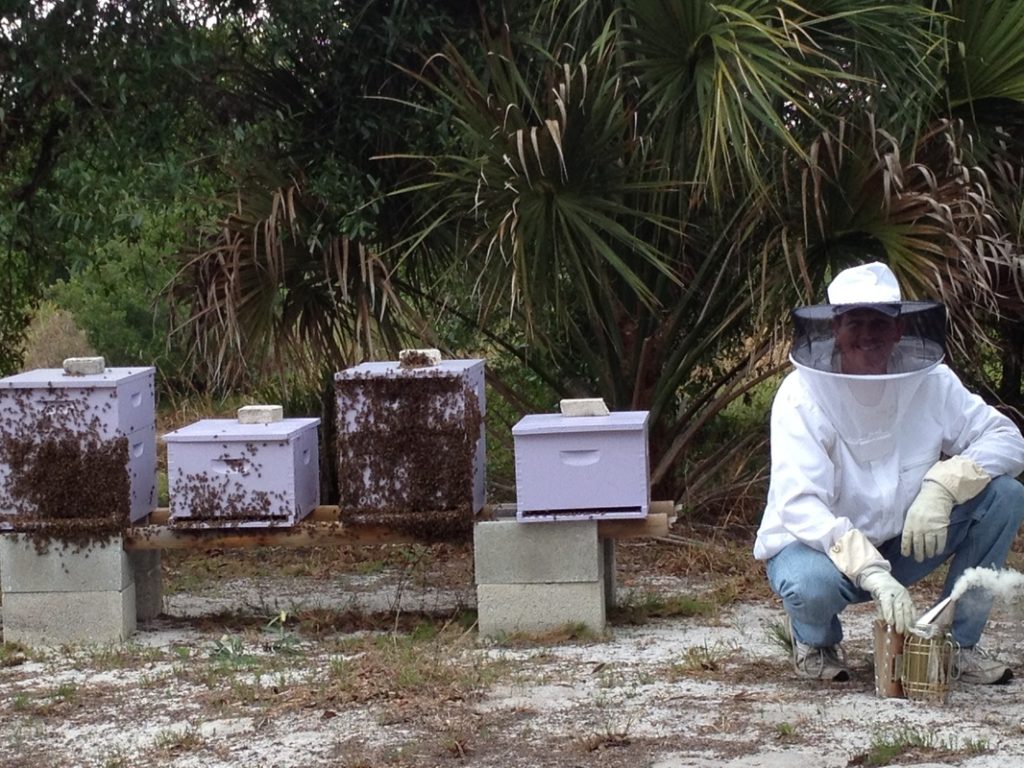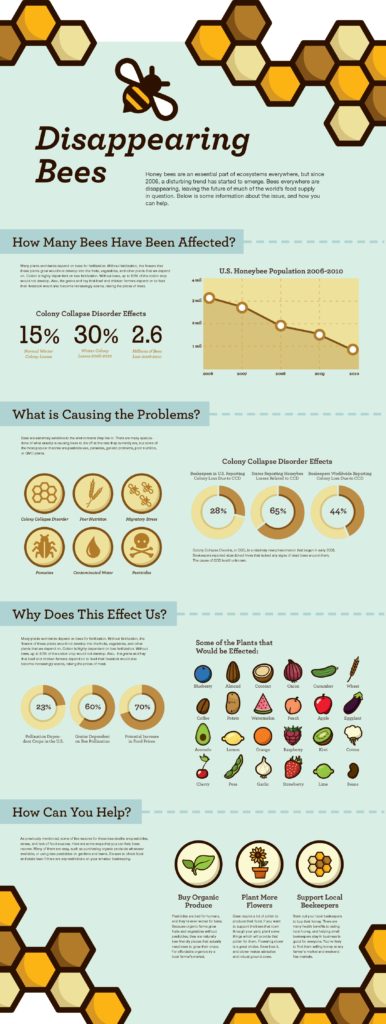What is a Swarm?
A Swarm is the reproductive function of a colony of honey bees.
Typically, the queen mother will split off the original colony of bees, leaving to build a new hive elsewhere with 40-60% of the worker bees from the original colony.
In doing so, queen mother leaves behind the newly hatched daughter queen with the remaining bees to continue their existence in their original location.
The part of the colony that leaves may be referred to as a Swarm (noun), not to be confused with the activity of swarming, which is the process taking place (verb).
The Swarm will typically settle in a temporary location (wall, tree, bush, shed, etc) within 30 yards or so for a couple hours to a couple days, while the colony sends out scouts bees to find their perfect “forever home”.
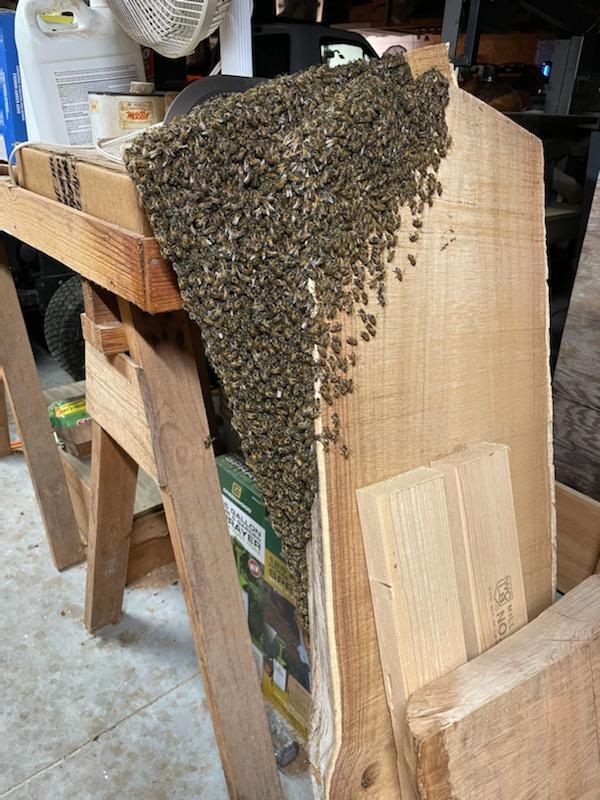
These scout bees will come back to the colony and report their findings by doing a dance on the outside of the Swarm in its temporary location.
A selection is made by the colony and the bees fly as a rolling cloud of bees to the location and start building wax honeycomb to store their food and produce more bees.

Once honeycomb is present, the colony is no longer referred to as a Swarm and the process of swarming is completed.
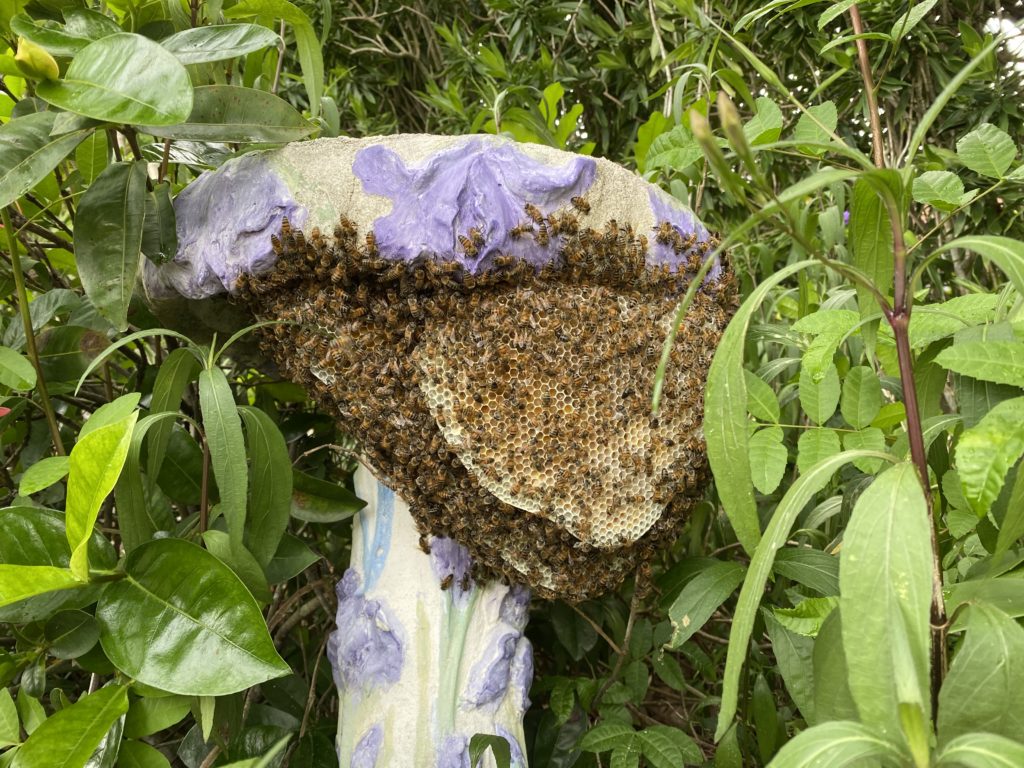
In Florida, depending on the genetics, colonies can swarm anywhere from 2-9 times per year.
Although Swarms can be intimidating due to the sheer number of bees, the honey bees are actually the most docile at this point since they have no food nor babies to protect and are merely looking for a new home.
It’s important to note that although docile, poking them with a stick, spraying them with anything or any other aggravating activity may still cause defensive behavior and may cause someone to get stung by one or more bees.
Why do Swarms happen?
A Swarm can occur for a number of reasons:
- Reproductive function of the colony, typically when there’s an abundance of food available
- Bees ran out of room for the queen to lay sufficient eggs to maintain colony growth at their current location (too small)
- Hive location is less than ideal to start with (not protected enough from rain, wind, etc)
- There’s a pest inside the hive that the bees cannot get under control, so they leave to preserve their genetics rather than being overrun by the pest (genetic preservation)
- There’s a reoccurring pest or disturbance outside the hive that poses a threat to the bees
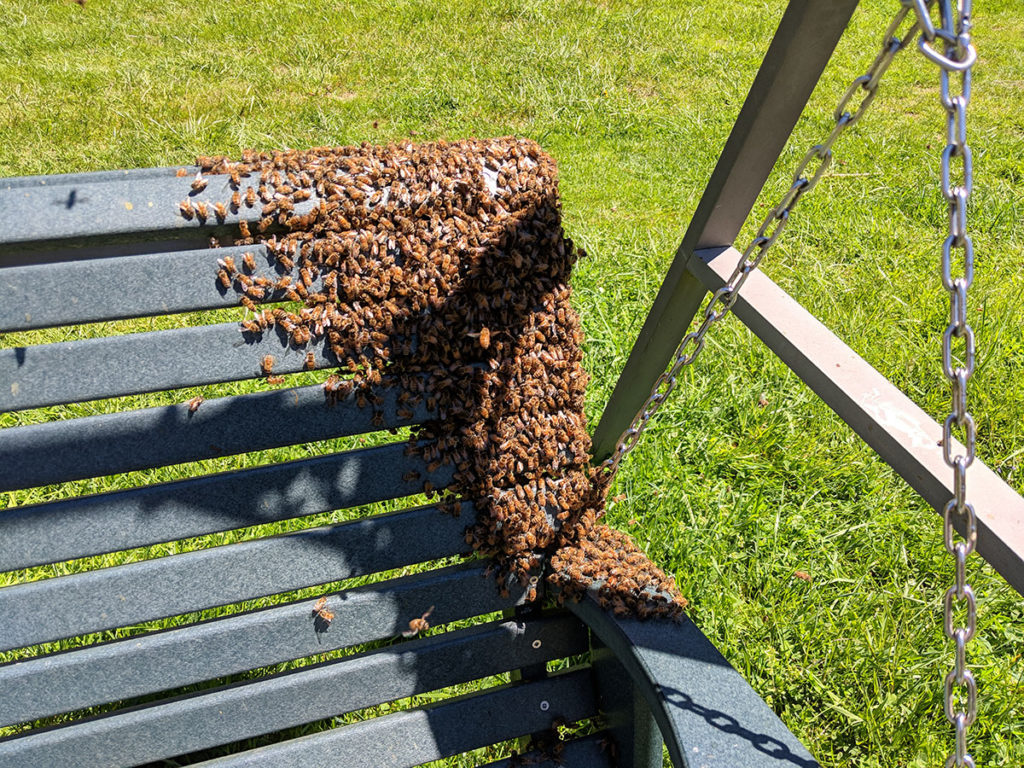
What is Swarm Season?
Swarm Season occurs during times when there is good “nectar flow”, referring to large number of blooms from one specific and prolific and/or various floral sources.
Primary floral sources throughout most of SW Florida include, but are not limited to:
- Oaks (spring)
- Mangrove (spring)
- Citrus/Orange Blossom (spring)
- Palmetto (late spring and summer)
- Palms (late spring summer)
- Melaleuca (late summer and fall)
- Brazilian Pepper (spring and fall)
The time period for any one floral / bloom source is typically 4-6 weeks, where that particular flowers nectar and/or pollen will be available.
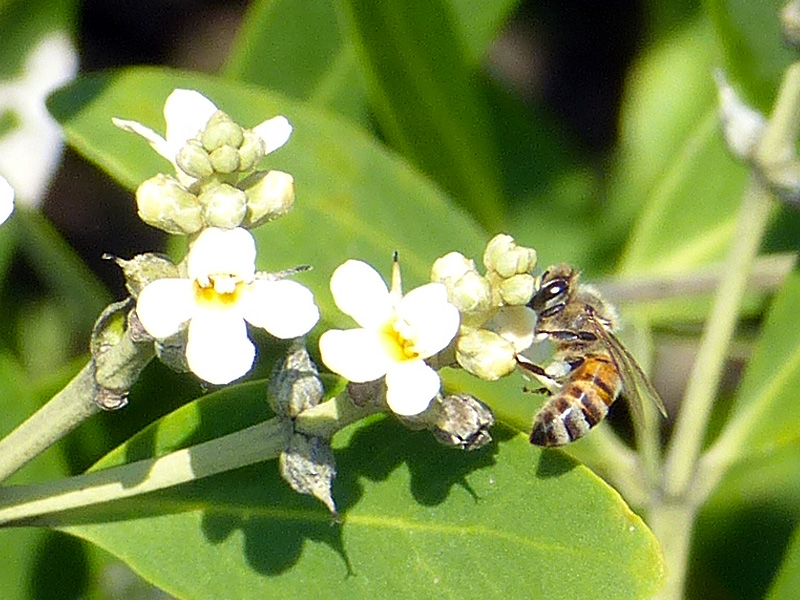
When does Swarm Season occur in SW Florida?
In SW Florida, it is possible for Swarm Season to start as early as December after “winter solstice” as the days get longer again or as late as March, if it’s a particularly cold winter.
Typically, it ends with the Brazilian pepper blooming as early as Sep or as late as Nov.
Our weather is fickle, so one year can be very different from the next.
Nationwide, the more active Swarm Seasons occurs right after “winter” as things warm up and spring starts with blooms everywhere; and in Florida, it also occurs again in the fall due to the prolific amount of Brazilian Pepper everywhere.
